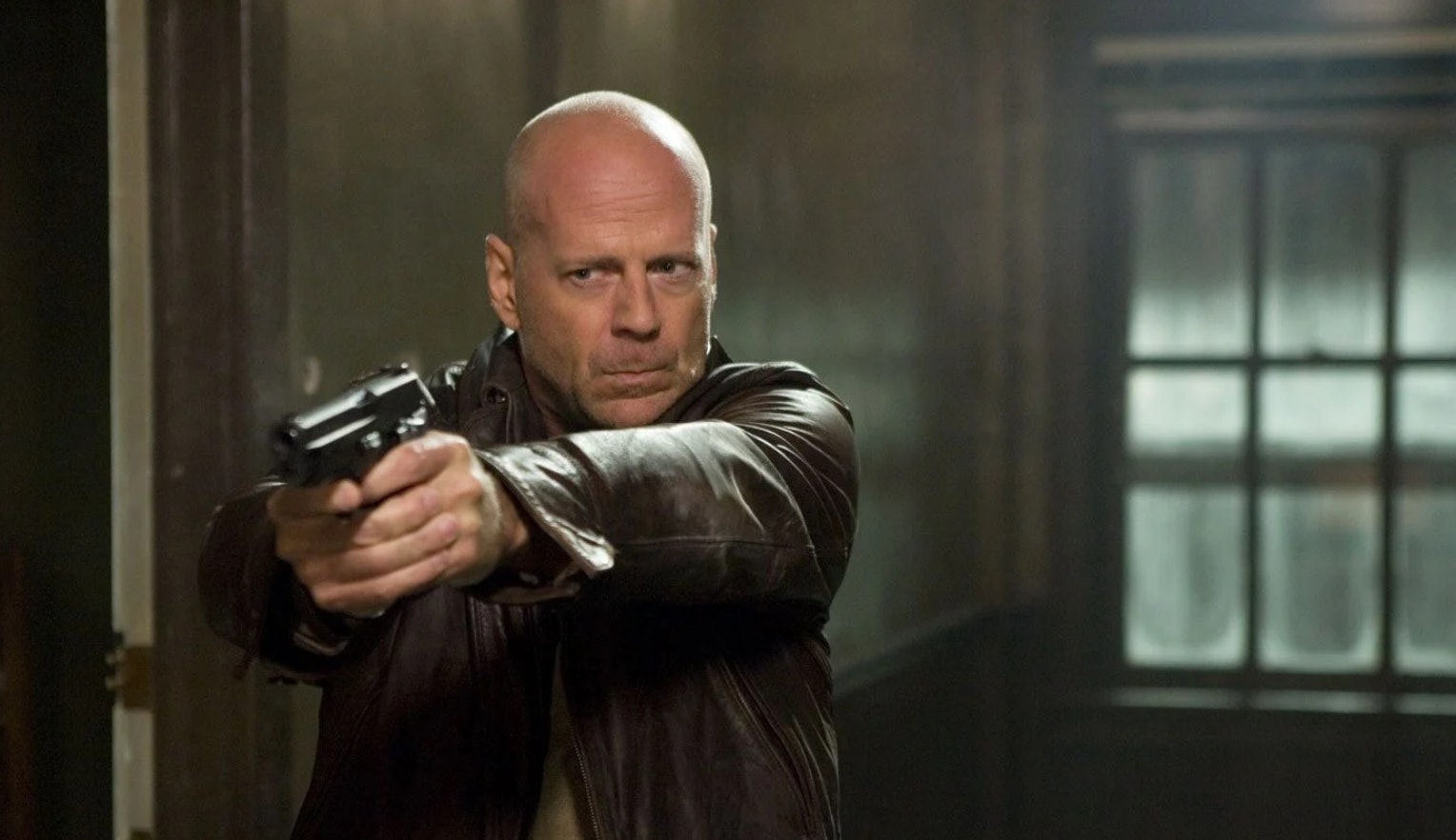
When asked about the appeal of a Die Hard film in the new millennium, stunt coordinator Brad Martin said “John McClane… is a modern-day cowboy.”
On the surface, the character of McClane (Bruce Willis) exudes the ethos of the typical Western protagonist, a masculine hero who exerts a vicious brutality to protect American ideals. Whether those values are literal or ephemeral, this fast-and-loose definition is helpful in any examination as to why Live Free or Die Hard, Len Wiseman’s 2007 entry into the famous action franchise, is an absolute failure. This fundamental misunderstanding of John McClane’s appeal explains the identity crisis found in the film’s foundation. In looking for John McClane the Cowboy, the film forgets the linchpin that elevated the preceding entries beyond popcorn fodder: John McClane the Man.
Before vivisecting the corpse of a 15-year-old film, we should mention that for all his faults, director Len Wiseman provides a definition and a clarity to the action sequences that films of this ilk from other Michael Bay acolytes like Luc Besson or Olivier Megaton would lack. A finale involving a F-35 firebombing a semi-truck notwithstanding, the action holds a sense of visceral weight. We see our characters sweat and ache and bleed and grunt.
But Wiseman’s visual language seems to only consist of verbs, lacking any sort of filmic sense when it comes to character moments. In trying to reverse engineer a Die Hard film for the 2000s — so much so that the film grinds to a halt to have an extended cameo from the patron saint of arrested development, Kevin Smith — Wiseman paints exclusively with the color palate of a steroid overdose, sloppily punctuating the frame with a putrid teal-and-orange hue that places the film squarely in the year 2007. The editing takes on a frenetic pace, its grasp for the ephemeral falling short and landing somewhere in the valley between incompetent and unwatchable.
Of major note here are the film’s attempts to ground itself in the field of new technologies, specifically the world of computers and hacking. The film’s plot, which sees McClane being taught the ropes of hacking by Matthew Farrell (Justin Long) while narrowly avoiding precarious situation after precarious situation, places our protagonist into a world rebuilt in an image of zeros and ones. Ultimately, it concludes that the new technologies of Farrell, when successfully paired with the wild and rowdy antics of McClane, are essential in maintaining the established cultural hegemony.

This, in the abstract, is not a terrible idea. One of the original film’s most memorable scenes comes in an early stretch that sees McClane searching for his wife Holly’s name in a Nakatomi Plaza computer directory. His fundamental misunderstanding of new technology has been there since the beginning of the franchise. But the Man ultimately gives way to the Cowboy, losing every ounce of the blue-collar patina that endeared audiences to the character.
In the opening of the 1988 original, we’re introduced to John McClane as he winces in fear during his plane’s descent. This one shot establishes McClane’s humanity, revealing our protagonist as a human being with human problems. This intimate character moment endears the audience to him, making us root for him as he tries to prevent his wife and marriage from crumbling in the remains of Nakatomi Plaza.
Compare this to McClane’s introduction in Live Free or Die Hard, which sees our protagonist sitting in a police cruiser, watching in agony as his college-aged daughter performs foreplay in the back of a car. This act of voyeurism has an antithetical effect to the opening of the original film, coding McClane as a creep who views his daughter as chattel to be protected at all costs. He stops being a relatable protagonist, instead humorlessly moving listlessly from one set-piece to the next with no real emotional throughline, leaving the audience lost in a sea of breakneck editing and CGI abstraction.

Among the greater Die Hard franchise, Live Free or Die Hard feels like the black sheep. The only film to receive a PG-13 rating, Live Free exists in the odd sphere between mimicry and evolution, haphazardly attempting to transport the ethos of a series whose latest entry had come out 20 years prior into a world whose fears had evolved beyond the need for that particular brand of spectacle.
As awkward as that may sound, it wouldn’t be an issue if the film gave the audience a single character to latch onto. Instead, a slam-dunk audience surrogate in John McClane is rendered flaccid, devolving into something languid and ugly. In the same interview where Brad Martin calls John McClane a cowboy, Kevin Smith mentions that the appeal of the McClane character is in the “small human moments.” With Live Free or Die Hard everyone seems to forget this adage, grinding away at the human core until all that remains is an inedible paste.







